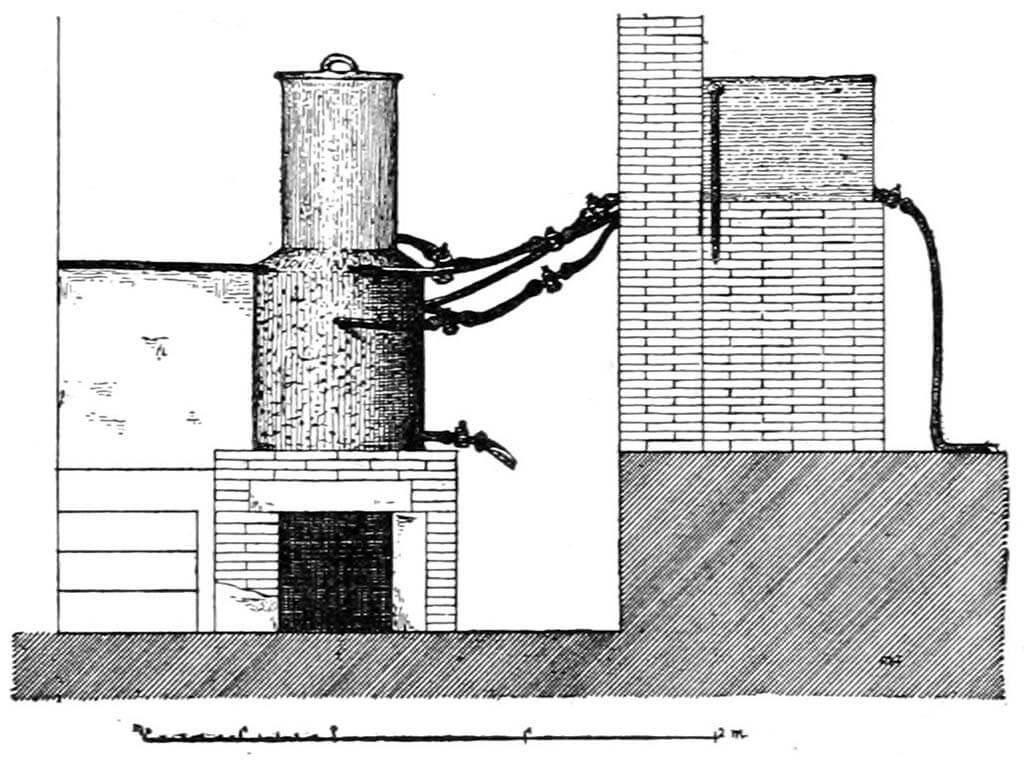An extraordinary archaeological discovery at the Villa della Pisanella in Boscoreale, near Naples, has brought to light the only fully intact Roman boiler known to exist. Complete with original pipes, valves, and fixtures, this ancient boiler exemplifies the remarkable engineering expertise of the Roman Empire, shedding new light on technological sophistication over 2,000 years ago.
A Glimpse into Roman Agriculture: The Villa della Pisanella
The Villa della Pisanella was among numerous agricultural estates dotting the Roman countryside near Pompeii. Unlike opulent Roman villas, it primarily served practical, agricultural purposes. Initially unearthed in 1868, excavations revealed the villa’s mosaics and walls, hinting at its significance. However, it wasn’t until 1894—under the direction of landowner Vincenzo De Prisco—that systematic excavation efforts led to the discovery of invaluable artifacts, including the famed “Boscoreale Treasure” and, most notably, the intact Roman boiler.

The villa’s role as a productive estate adds context to the boiler’s purpose. Its presence suggests advanced water management systems to support agricultural and domestic needs. Through the lens of Villa della Pisanella, we see how Roman technology extended beyond luxury to enhance the efficiency of everyday life.
The Roman Boiler: A Testament to Ancient Engineering
The Boscoreale boiler stands out as a sophisticated relic, designed for precise water flow management. Constructed from lead and connected by soldered pipes, it features complex bronze valves cast in molds. These valves allowed controlled water regulation through a rotation mechanism, similar to modern taps, revealing the Romans’ commitment to technical precision.

The famous Roman engineer Frontinus, in De aquae ductu urbis Romae, detailed water management standards in ancient Rome. It’s evident that the Boscoreale boiler system adhered to such guidelines, underscoring the consistency and rigor of Roman engineering practices. The preserved state of this boiler provides an unparalleled opportunity to study Roman plumbing systems, illustrating the Empire’s advanced knowledge in material science and fluid mechanics.
Advanced Assembly Techniques of the Roman Boiler
Creating the Boscoreale boiler required methods and materials well ahead of their time. Roman builders used a lead alloy solder and pine resin as flux to secure connections, applying heat from portable forges to ensure solid, leak-proof joints. This approach not only highlights the ingenuity of Roman craftsmanship but also speaks to the specialized tools and materials available to them.
![A relatively intact Roman water boiler with all its pipes, at the Villa della Pisanella in Boscoreale, Italy, 1st century BCE. Photograph by Fratelli Alinari, 1931 [2327x3018] : r/ArtefactPorn](https://preview.redd.it/a-relatively-intact-roman-water-boiler-with-all-its-pipes-v0-7tq88mjvvocc1.jpeg?width=640&crop=smart&auto=webp&s=83848febf2c291ac88211fa45d3a4ba59f674297)
Such construction techniques were both functional and innovative, relying on skilled labor and materials. The discovery of these intricate soldering methods, especially the use of pine resin to improve metal bonding, reveals a nuanced understanding of chemistry and engineering that aligned closely with practical needs.
Insights into Daily Life and Roman Innovation
The discovery of this intact Roman boiler offers a rare, vivid window into everyday Roman life, showcasing how the Empire’s engineering achievements extended beyond monumental architecture to the routines of daily existence. At Villa della Pisanella, this technology supported a working estate, providing water regulation essential for various agricultural and domestic functions.
This level of technical sophistication reveals the high priority Romans placed on utility and innovation. The boiler at Boscoreale stands as a symbol of Rome’s capacity to integrate advanced technology into practical applications, merging functionality with durability. As fragments of this unique system are displayed across museums, they remind us of the enduring legacy of Roman craftsmanship and ingenuity.
Conclusion: A Legacy of Practical Sophistication
The Roman boiler discovered at Villa della Pisanella, now dispersed in museums worldwide, is more than an artifact—it is a testament to the practicality and innovation of Roman society. This relic of advanced engineering is a rare glimpse into how ancient Romans utilized technology to improve the quality and efficiency of everyday life.
Through the discovery and preservation of the Boscoreale boiler, we gain not only a tangible link to the past but also a profound understanding of how the Romans’ practical sophistication influenced their society’s infrastructure and daily routines. The boiler, complete with its original mechanisms, embodies the ingenuity of an empire that shaped engineering principles for centuries to come.

